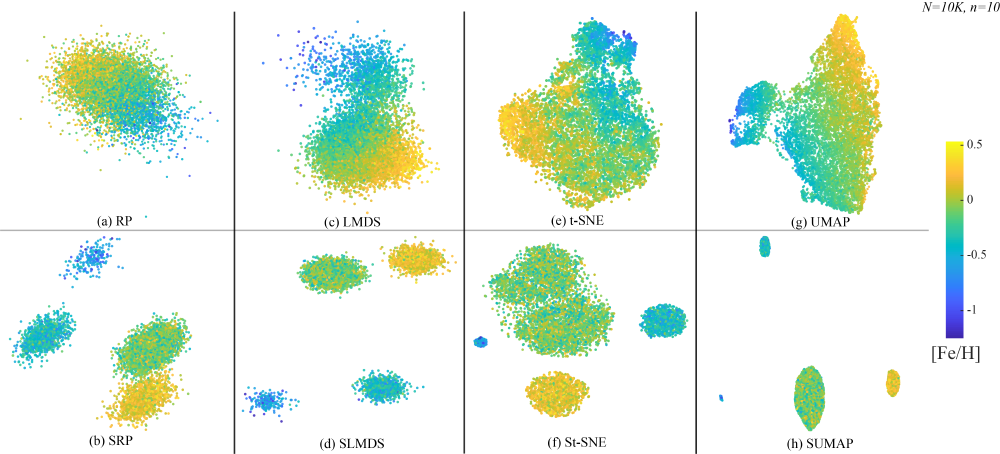DR vs. SDR with real-world astronomical data

We compare DR and HD-SDR (RP, LMDS, t-SNE, and UMAP) for an unlabeled astronomical data set with no ground-truth labels: GALAH DR2 (n=10K with d=10). The projections are color-coded by one of the input values, [Fe/H], so that astronomers can further analyze the data. The learning rate parameter is set to 0.17. Note that in all cases, HD-SDR shows a clearer separation of clusters compared with DR, and SLMDS, St-SNE, and SUMAP exhibit four major clusters with similar distributions of colors within each cluster, while SRP shows three major clusters with one of them having subclusters.